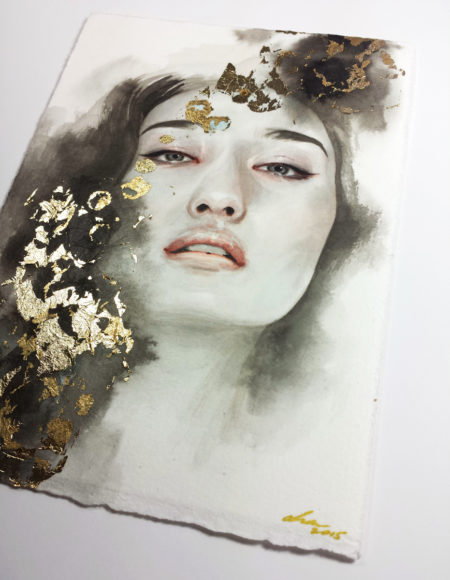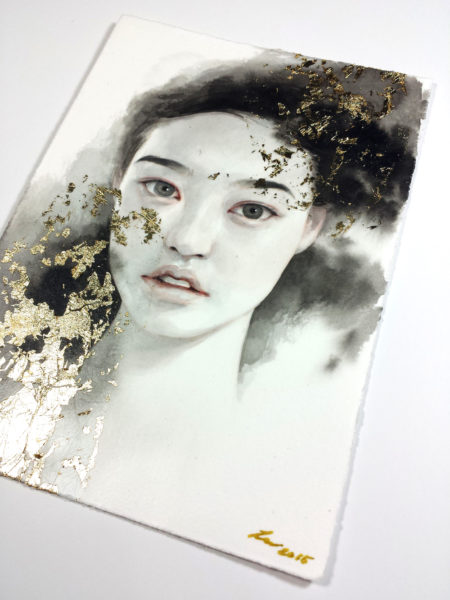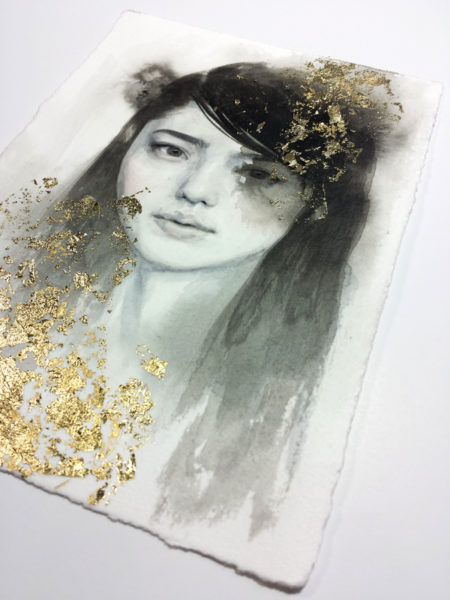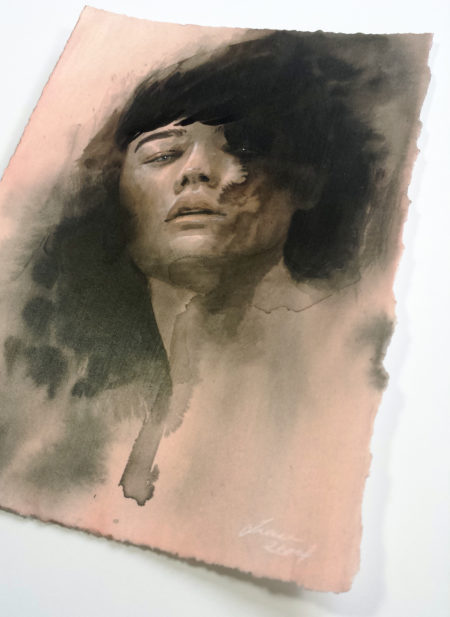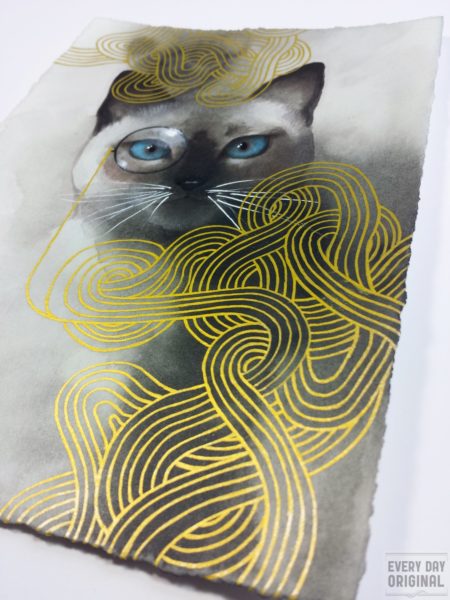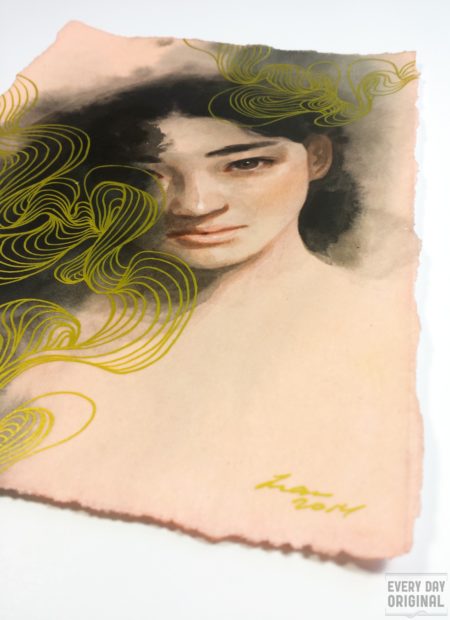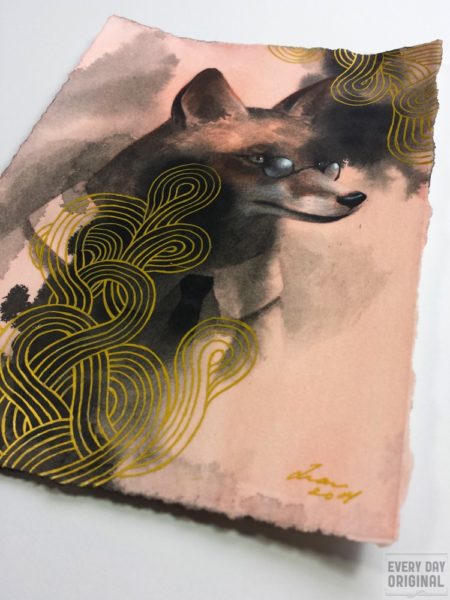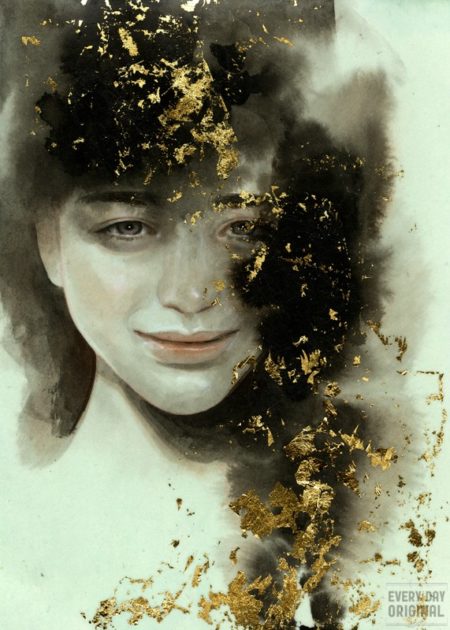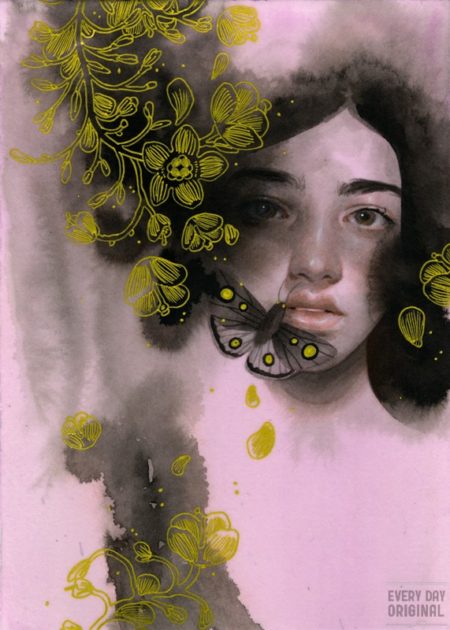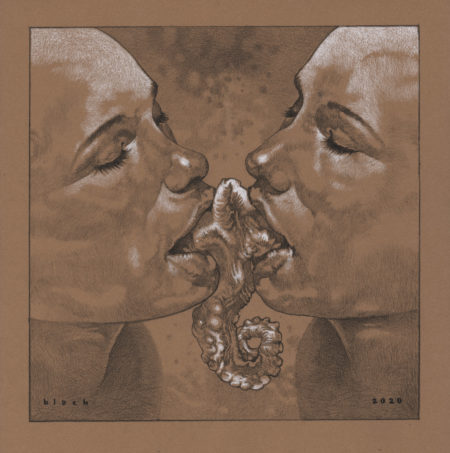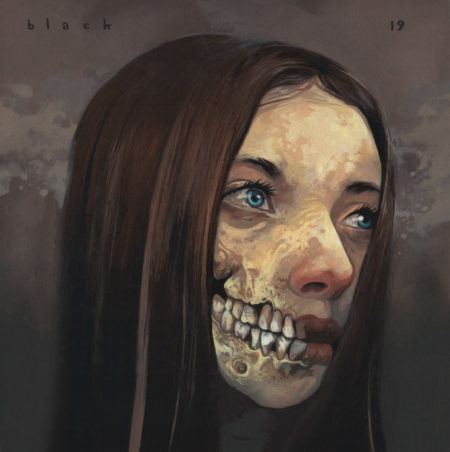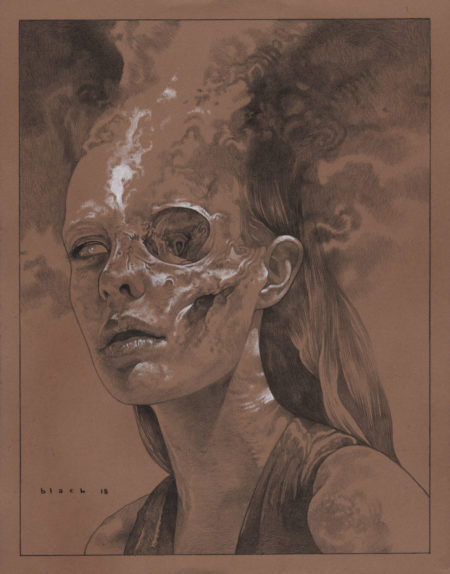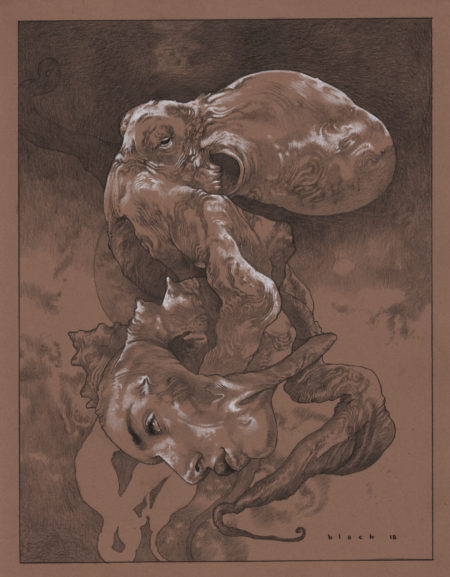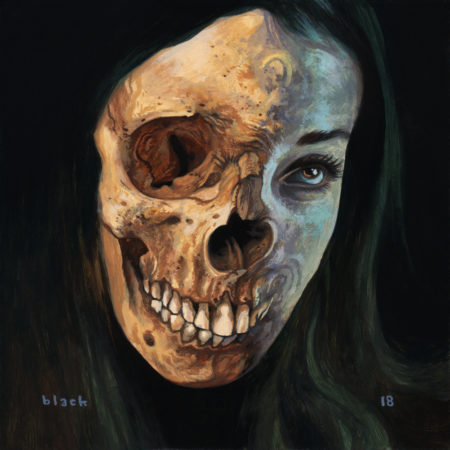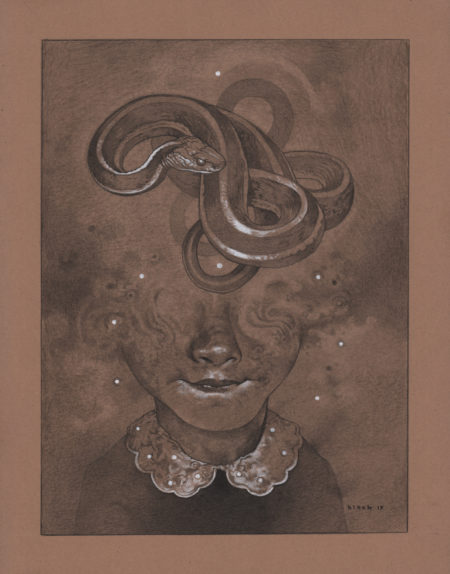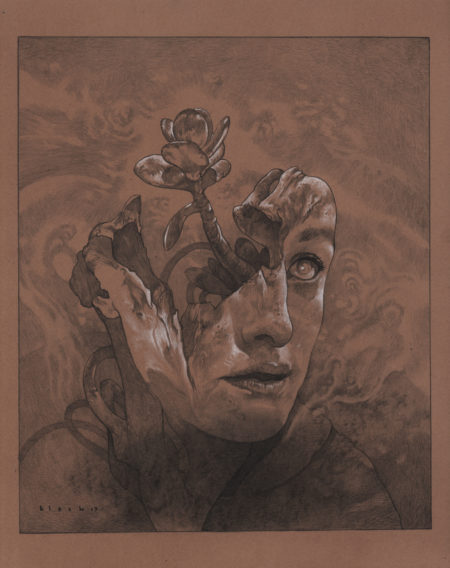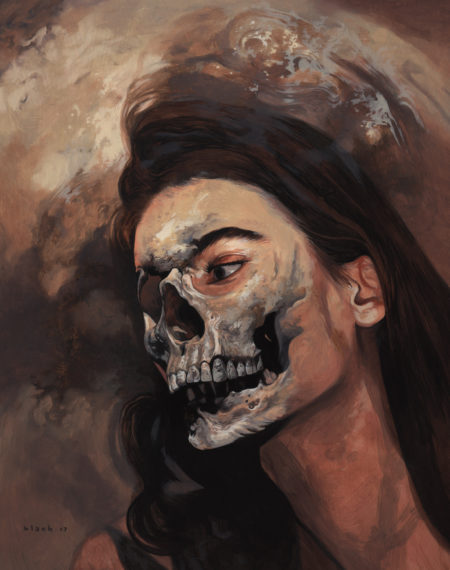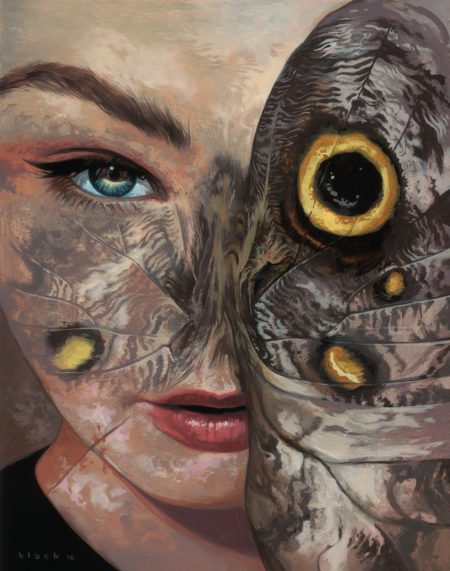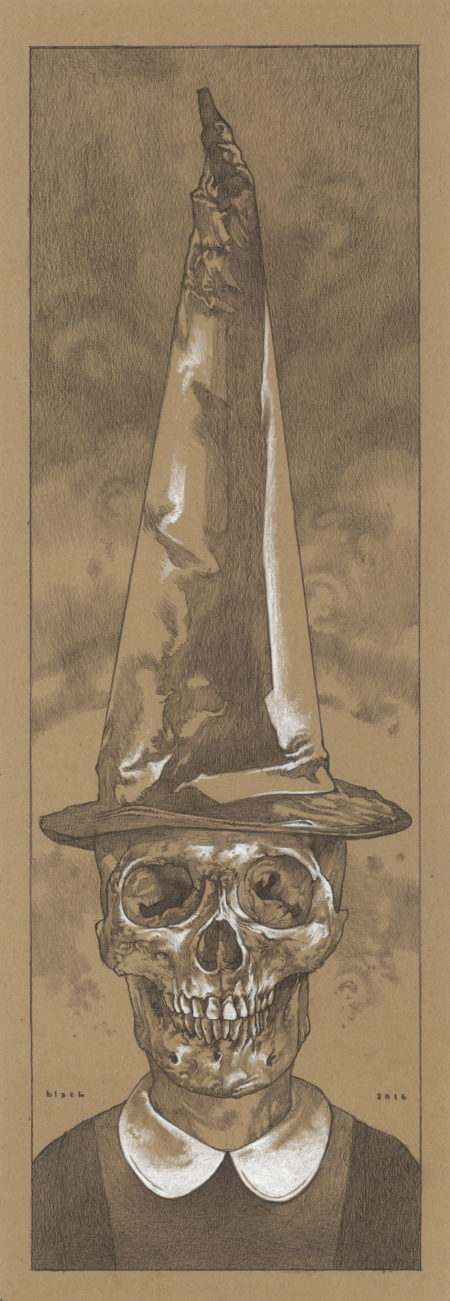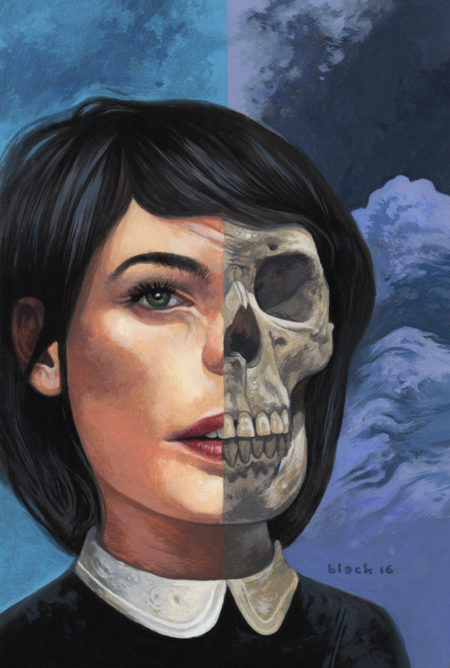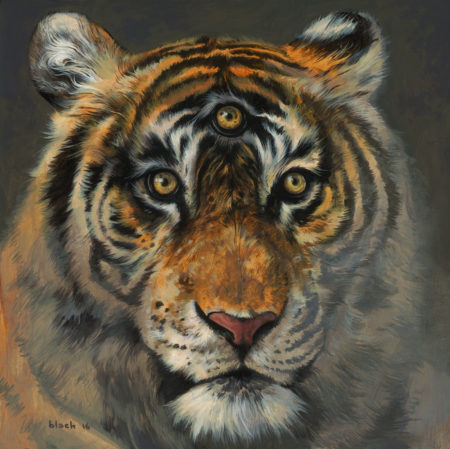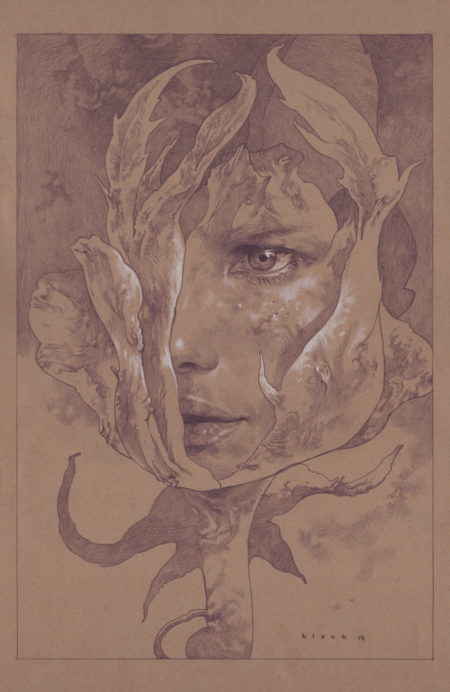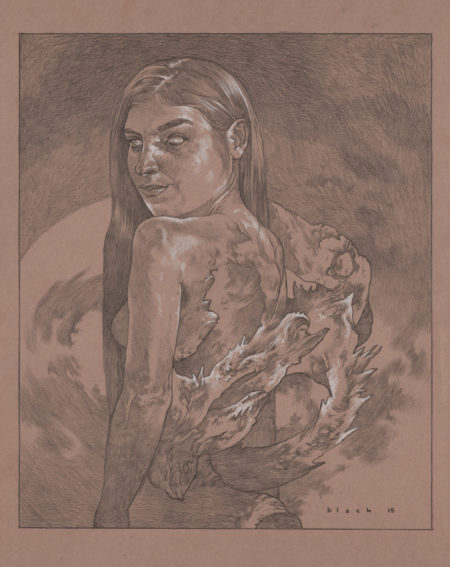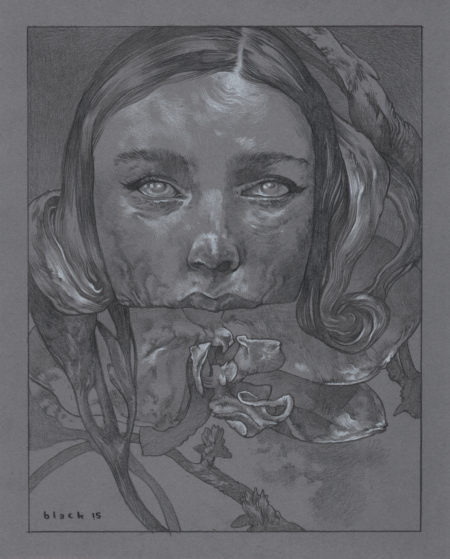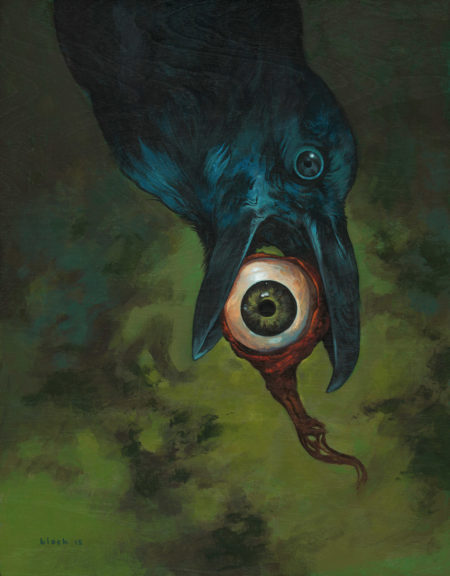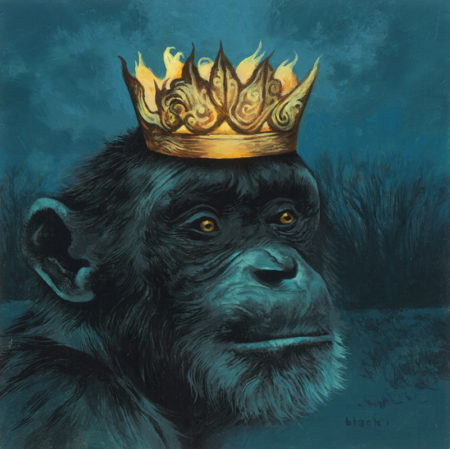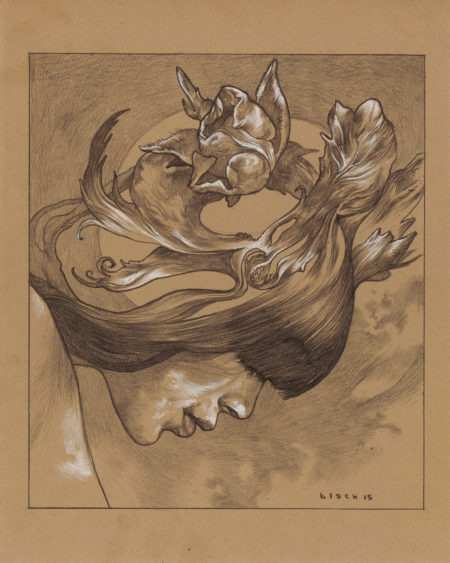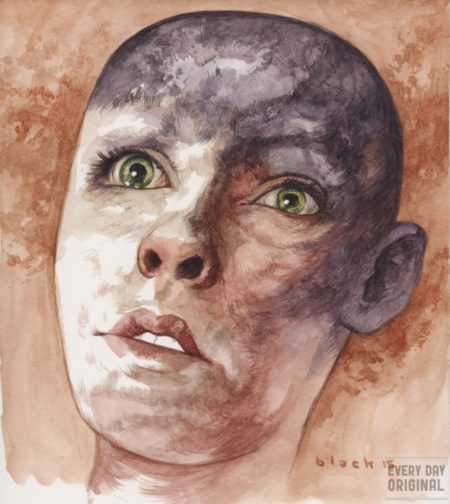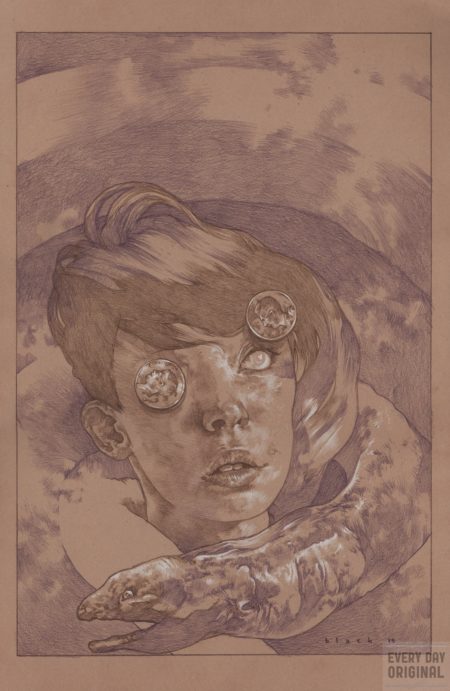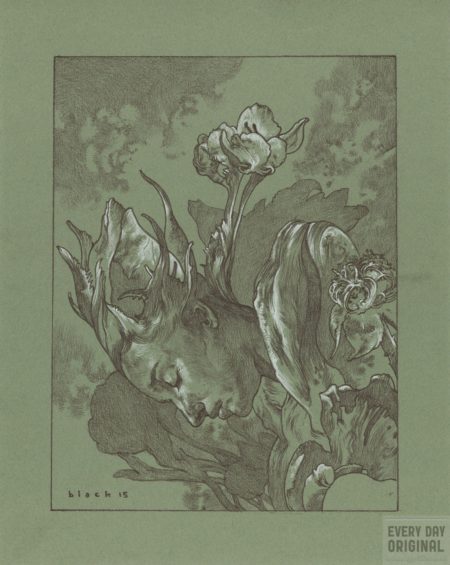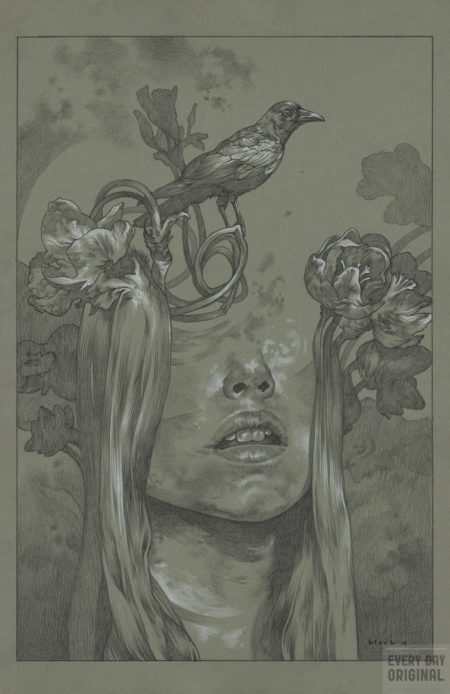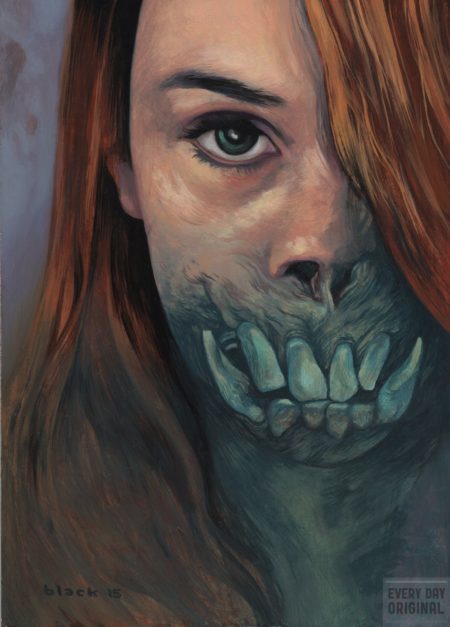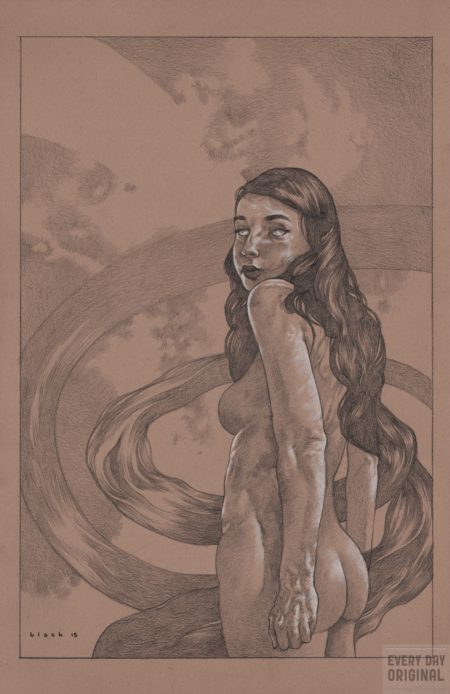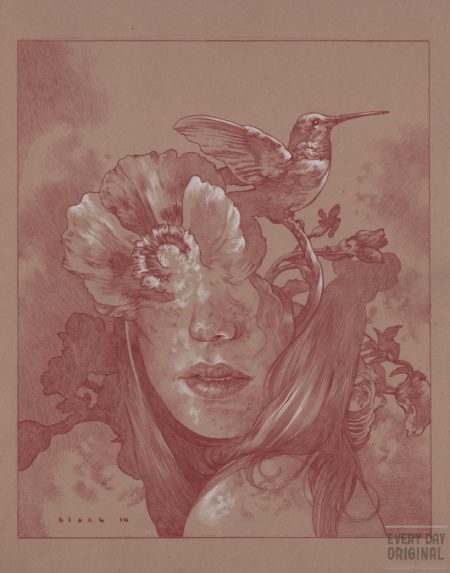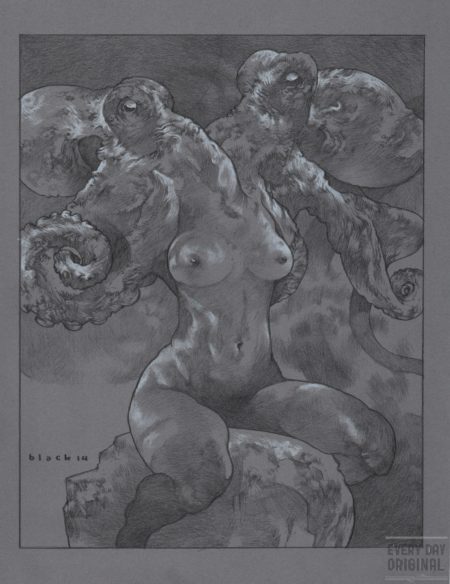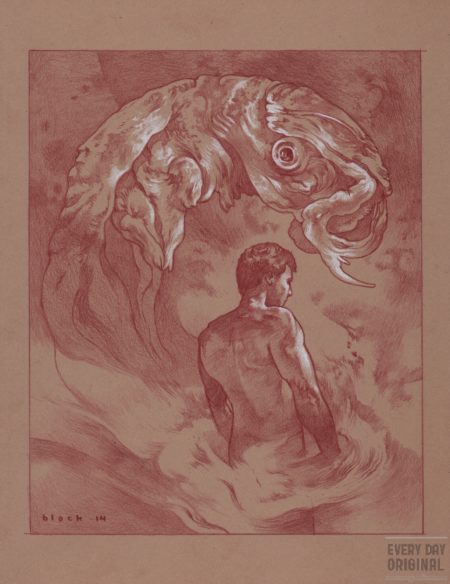I’ve known Rebecca for a number of years now, and it has been nothing short of inspiring to watch her work evolve. She has come from SFF roots, like many here, and has pushed her subject matter and scale to epic proportions. What you may not know is that these incredible works are done in large part with a bic pen. You read that right. Her commitment to her art and her media is something we can all aspire to. So it gives us great pleasure now to reach inside Rebecca’s head and see what makes her tick.
Rebecca is known for her masterful use of ballpoint pen and goldleaf to create moody and atmospheric illustrations. These works harken back to classic epics and mythology while maintaining her own distinct vision. In our conversation with Rebecca she talks to us about process, artistic growth, and personal reflections. It is always such a treat to see what she creates for Every Day Original, and now you can experience some of the words and wisdom behind those creations.
1. We met at the Illustration Master Class, and I feel like I got to see your artistic evolution personally. There was a point where you really levelled up, figures were getting nailed, an emotional quality was in every piece, and around this time you started working with leaf. Can you tell us what happened?
That evolution was a process with a few steps that I can remember. The first hurdle I remember was taking my health and confidence in hand — I came back to the IMC that year after really jumping into exercise, and that really helped me come to terms with myself and care less what people thought of me. Hand in hand with that came a resolution to stop trying to ‘be’ things I didn’t enjoy. I realized I didn’t want to work with paint, or digital, or watercolour, and that was okay. The second big thing that happened was a mentorship with Pete Mohrbacher that began right after IMC. He worked with me to focus my path in a way I found fulfilling, and also helped me with some technical, mechanical skills I was unsure about. And finally, a very influential trip to the MET cemented to me the type of work I wanted to do (where I became reacquainted with Klimt and his gold leaf). I reconnected with my artistic idols and the genre of art I wanted my work to fall into, and I now strive to emulate the feelings I had when I saw their work in every new piece.
2. How can someone else have the same kind of breakthroughs you’ve experienced?
I think it’s important to do a lot of self reflection, and to figure out what really makes you create as an artist. Some people need a sherpa for that, others can do it themselves, but often going back to your childhood and remembering what artist/product first inspired awe in you can help. What was the first thing that you wanted to copy as a child? That’s usually where your passion lies.
3. Let’s step back, when did you know you wanted to be a professional artist? Did you have role models in your life, artists or no, who helped get you here?
I can’t think of a time in my life when I didn’t draw in some capacity. I was very lucky to have a mother that fully encouraged me, and so was able to surround me with art teachers who could give me the skills I needed. I think the first time I actually wanted it to be my profession was watching animated cartoons as a kid. The skill it took to create them blew my mind. I eventually realized that though I admired animation it wasn’t exactly my calling, but it definitely opened my mind to the possibility that someone out there was creating art and getting paid for it!
4. Could you tell us about your process and if there are any differences between your pieces on EDO vs personal pieces versus commissioned work?
I am really grateful to EDO for providing a consistent stimulus, which has helped me streamline my process considerably. There’s not much difference between the process for EDO and personal work, just an extra step of showing my finished sketch to the client for commissioned work. EDO has helped me have confidence in my ability to take very rough pencils to the finish without wasting time doubting my skills. My process for EDO is a lot about “what I feel like doing that day”. I start by taking a look at my stash of reference photographs and seeing if anything catches my eye in gesture or subject matter. I then push and pull them in Photoshop to get my desired composition. A commissioned piece will start in reverse, from the idea I need to get to, working backwards to the reference I will need to make that happen.
5. A lot of us will say how limitations help us do better work. Finding creative solutions around restrictions is a defining characteristic of a successful artist. You work in ball point and gold leaf, limited in palette, stroke, and overall look. How have you stretched the limits of these materials to create your work? Do you secretly add thin layers of paint when nobody is looking?
I definitely agree that limitations can help us do better work. I am quite lucky in that people know the end look of what I produce, and don’t try to push me into other directions. However, I never want to be stagnant with my own work, so I try to push the boundaries of what ballpoint can do. I think it also helps that I strive to recreate an image I have in my head, and any experimenting I do is in aid of that goal. I don’t use paint at the moment, though I have definitely thought about it and am not opposed. I don’t like experimenting for the sake of experimenting, however, so I want to have a purpose to the decision when I finally take that step.
6. Gold seems to be the color of the decade, and a lot of artists are picking it up. You use it very successfully, and it’s always interesting to see what you “golden up” and what you leave in pen. How do you choose what to make gold? How do you think about the gold in the piece, what does it add? What does it take away?
I choose the gold portions based on what best services the composition. If a form needs accenting or contrast to stand out, I will usually accent it with gold. I also use it (hopefully successfully) to make the eye move around the piece. For me, gold is my contrast to the dark of the ink. Before I started using gold I thought my illustrations lacked a certain something, and I think the gold has filled that purpose nicely.
7. What’s the hardest part of the artistic/illustration process for you?
For me, the hardest part is in the middle, after I have traced out my sketch and I’m starting to fill in the midtones and basic ground values. It’s at this point that the piece looks hideous and I start to doubt that I’ll be able to pull it through to something beautiful. This also happens if I don’t have very good reference of whatever I’m trying to draw, and I start to doubt my ability to use my previous experience. I am lucky that I am dogged enough to get through these phases, but it is painful every time.
8. Take us through a typical day for Rebecca Y. Do you have practices or systems you use to organize your day? Do you just do art 9-5 then relax? Tell us more.
I like to start by eating well and taking care of daily tasks, so I am emotionally ready for the art portion of the day. I have tried to make lists of tasks, but I don’t think it is really ‘me’, as I am naturally a ‘grazer’ but for art. One of the reasons I enjoy ballpoint is that I can work a little bit, put it down, do something else, and come right back to it without skipping a beat.
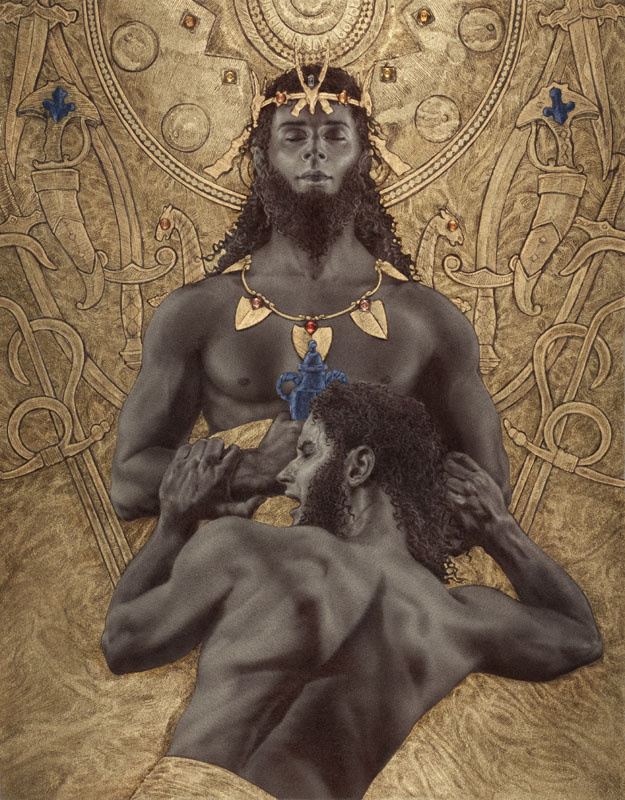 9. You work focuses alot on the figure and detailed anatomy. What draws you most to the human figure, and what does it communicate in your work?
9. You work focuses alot on the figure and detailed anatomy. What draws you most to the human figure, and what does it communicate in your work?
I’ve always been fascinated by humans’ ability to communicate nonverbally. Body language is a very powerful tool, and I try to have my characters show their personality traits through their gestures and bodies. I’m also fascinated by the intricate shadows I get to draw in all the different gestures we can make. Beyond that I just think human bodies when shown at the pinnacle of their capabilities are beautiful.
10. You’re also a woman doing fantasy art. At EDO we have a strong team of women, and proud of it. But this was not always a point of pride for an art gallery, and we’ve seen more and more female-focused galleries, books, and shows. To what do you attribute this evolution?
I am very happy that there are more opportunities for women, though as a competitive person I am always striving for my work to compete with the best of the best, regardless of sex. I think the evolution can be in part attributed to the rise in popularity of genre artwork. Because fantasy and sci-fi have been under the radar of the traditional fine art world, more women have been able to rise to positions of leadership and inspire young artists. Had they been fighting against the established art world there might have been much more backlash. I think also in fantasy art, it’s much more about the finished product than the personality behind the work, and that greatly helps minorities stand out and be recognized for their skill.
11. Did you ever experience any kind of missed opportunity or discrimination because you were a woman? Can you tell us about that experience?
It is possible I might have, but I probably wouldn’t have noticed it at the time. I am much more likely to attribute a failure to my own lack of preparation or skill, than to an outside force like that. I have experienced discrimination outside of the art realm, but within art I have thankfully seen skill take a higher place.
12. Your work is incredibly detailed, and I’ve watched you labor on these huge pieces in a tiny bic pen. What solutions/tips have you discovered that allow you to create such time consuming work? Do you meditate, listen to audiobooks, plan on never having a social life? How do you do it all?
For better or worse, I have a bit of an obsessive personality. It definitely helps when creating such time consuming work. I like to listen to e-sports streams/world championship competitions when working, as well as some movie analysis panels. Add to that, disgusting amounts of reruns of my favourite TV shows. Basically, any kind of audio stimulation with multiple voices. The best solution I’ve found for myself is to avoid large areas of colour fill. It’s must more interesting for me to do detail work than fill in areas with tone, even if it’s harder or more time consuming.
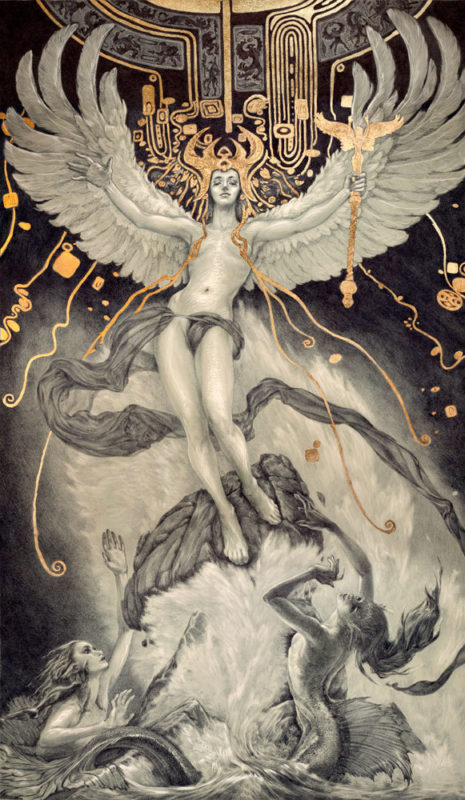
13. What are some exciting projects on the horizon that you can tell us more about?
I have some new personal pieces I’m planning for IlluXcon that I hope will be received well. As well I hope to make my new EDO pieces more intricate and powerful, stretching boundaries, similar to Death Dealer. Some other big news I have, I can’t talk about for a while, but I am excited to see the reaction when I can. My Gilgamesh illustrated book will be coming out soon and I hope it will launch a new direction in my career, where I can illustrate all the classic epics.
14. Parting words, do you have any advice for artists out there who want to create the kind of emotionally impactful work that you do?
I think what I’d like to tell past me is that it’s okay to do the same thing you love over and over again, if it’s based on a passion goal. I want to say that you don’t have to force yourself to do things you think you “should”, based on the industry or peer opinion. It rarely ever works and wastes a lot of time.
15. Where else other than EDO can people find your work? And buy it?
[fbcomments num=”50″ countmsg=”wonderful comments!”]

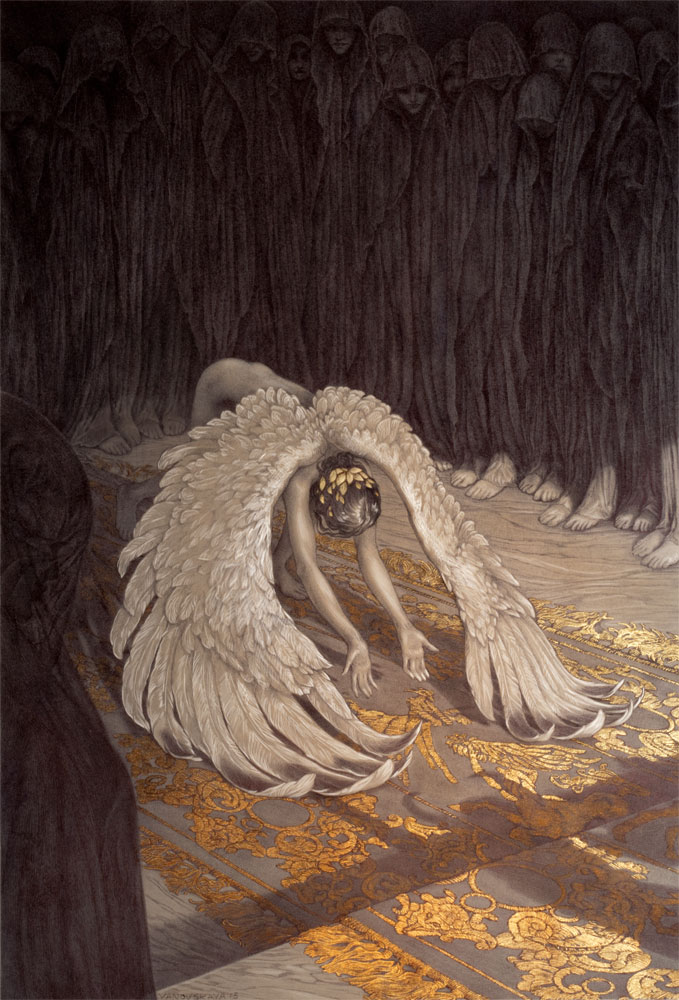
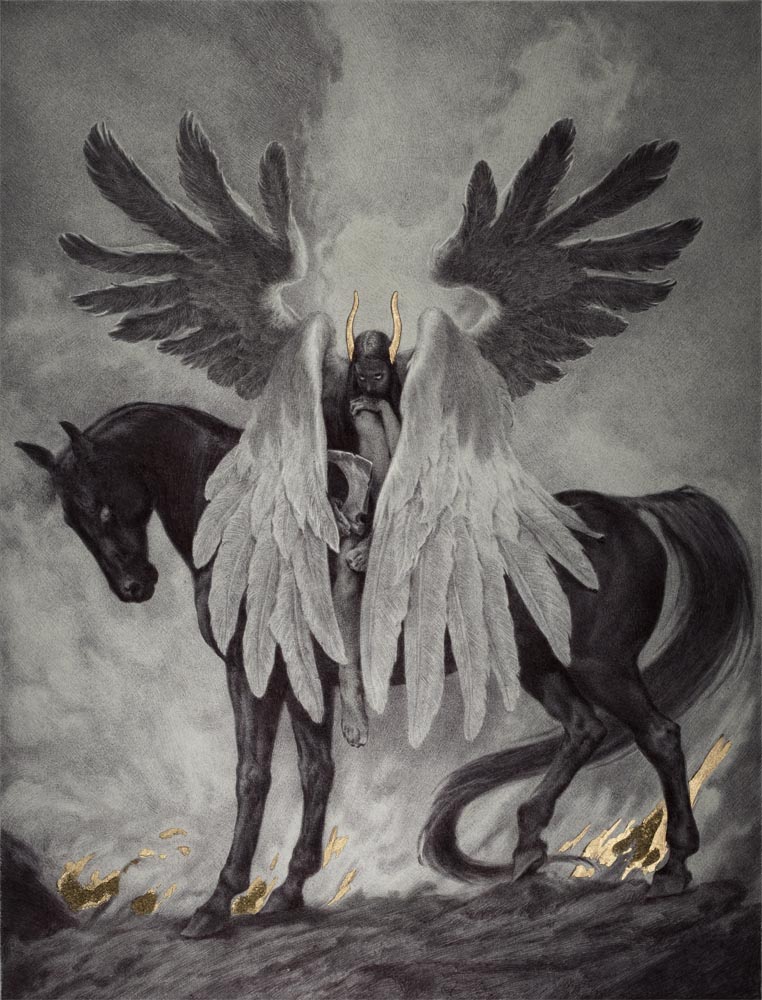
 9. You work focuses alot on the figure and detailed anatomy. What draws you most to the human figure, and what does it communicate in your work?
9. You work focuses alot on the figure and detailed anatomy. What draws you most to the human figure, and what does it communicate in your work?
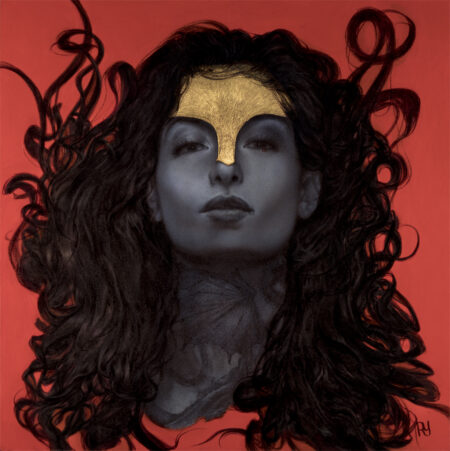

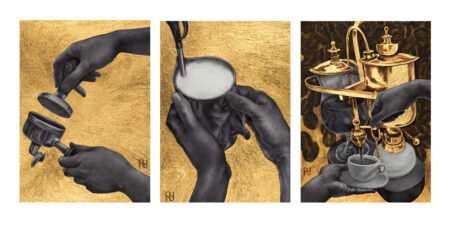

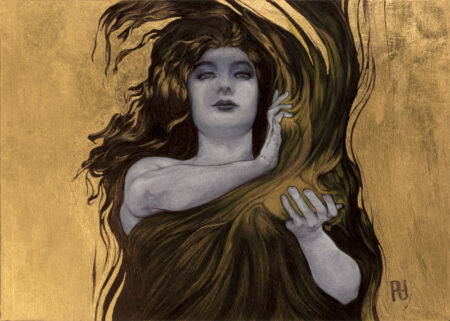

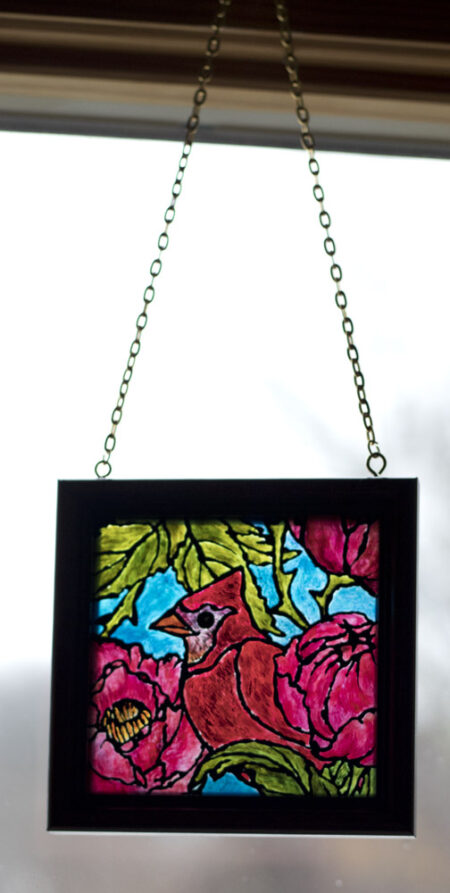
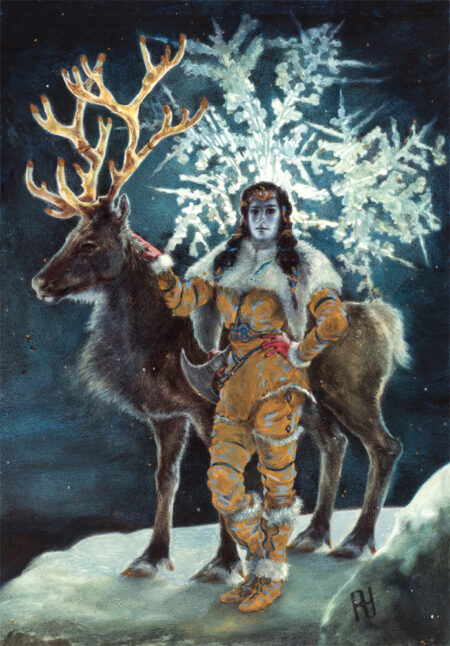
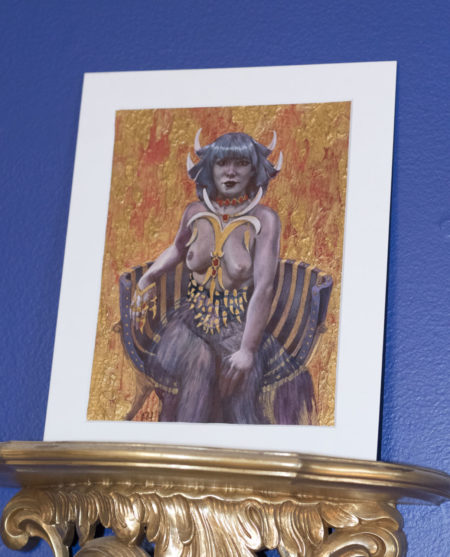
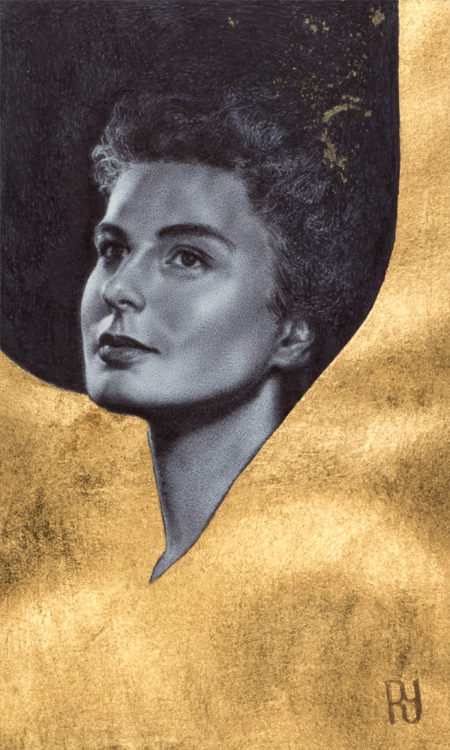
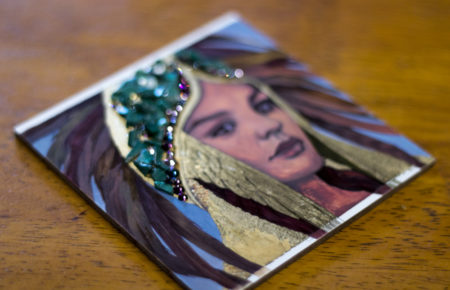
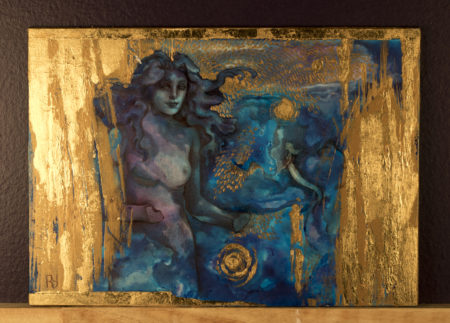
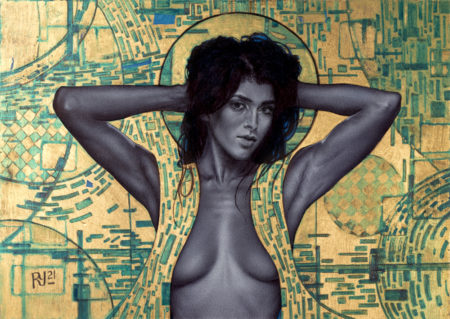
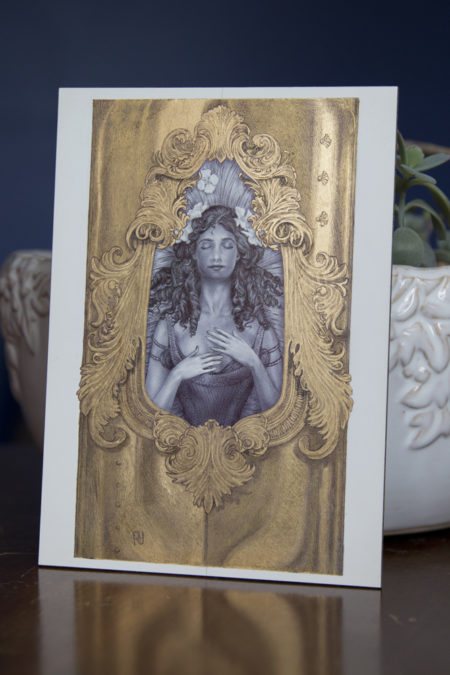


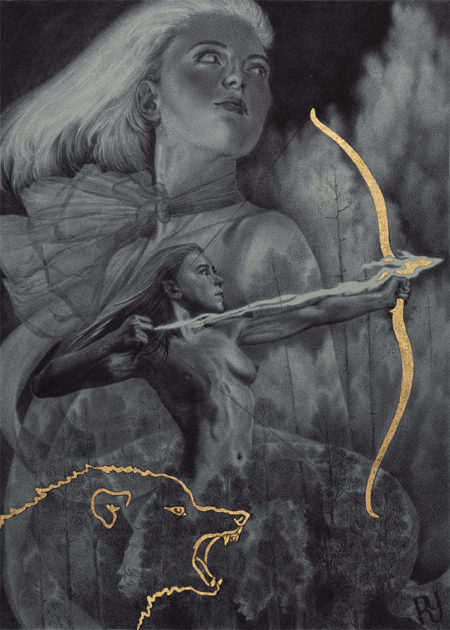

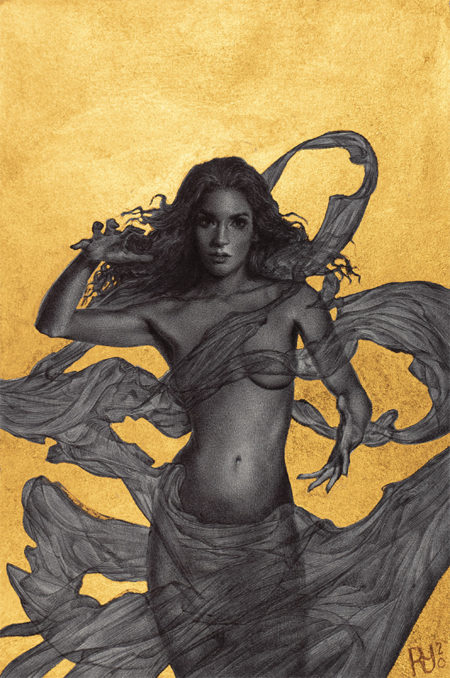
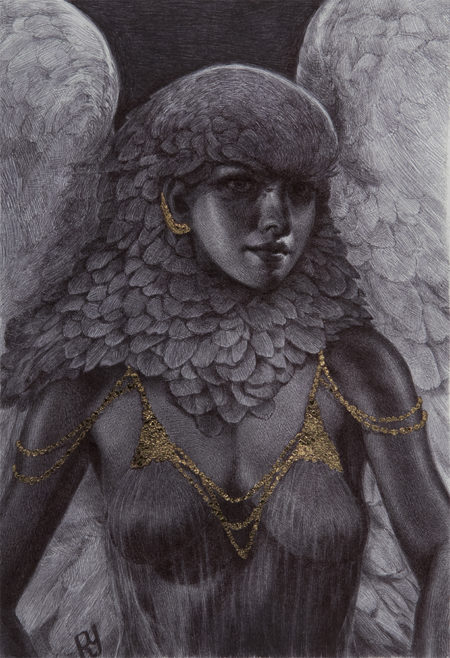
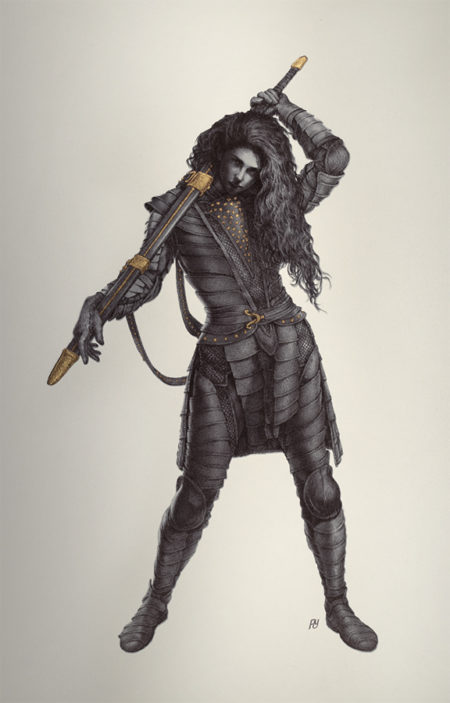
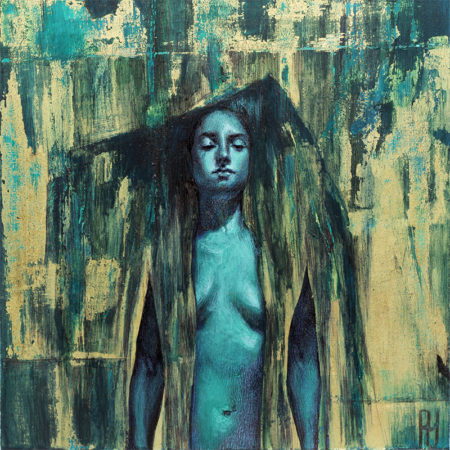
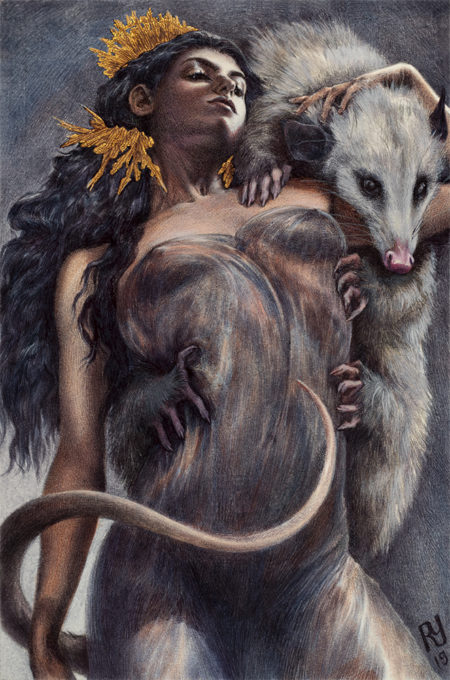


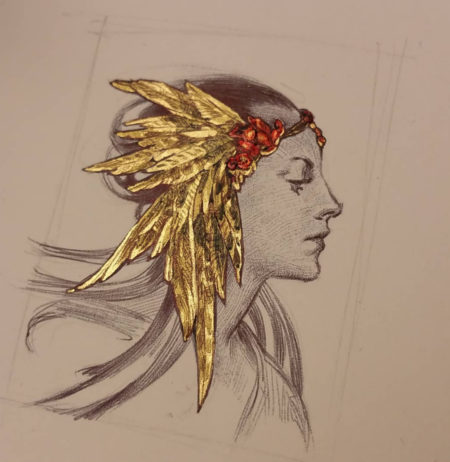
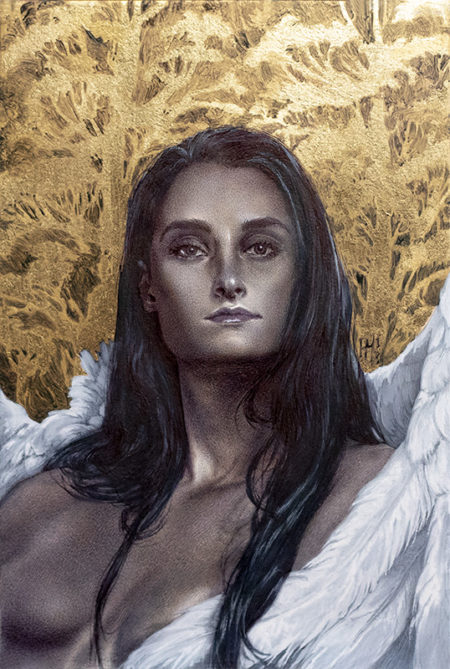

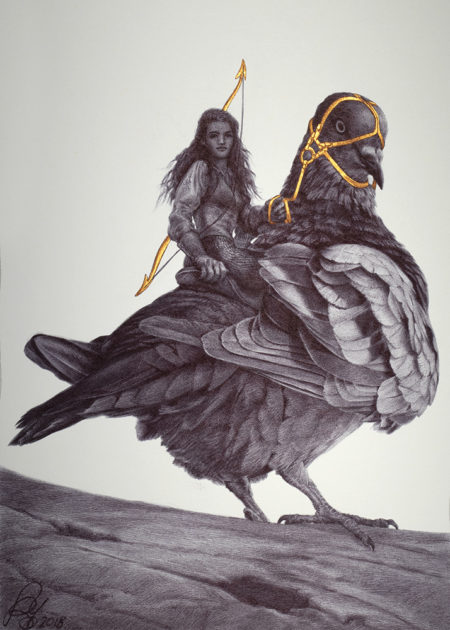

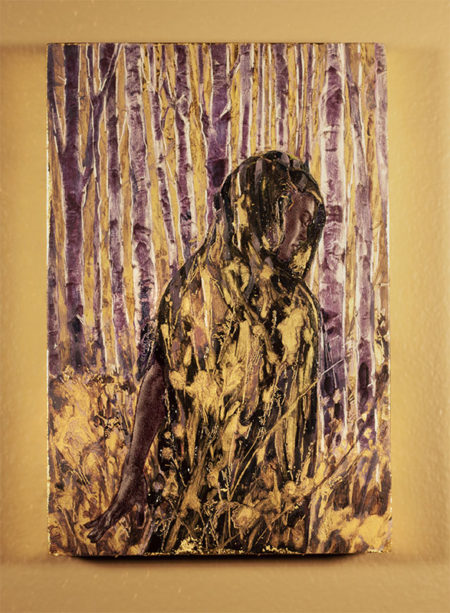
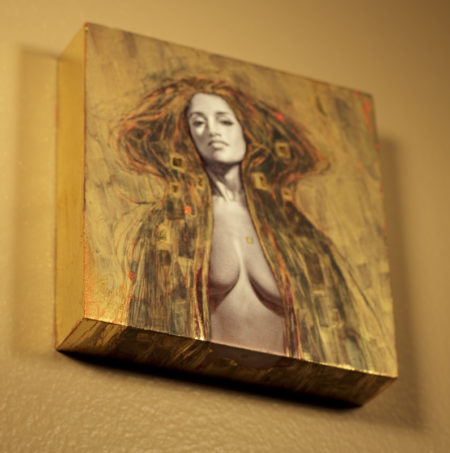
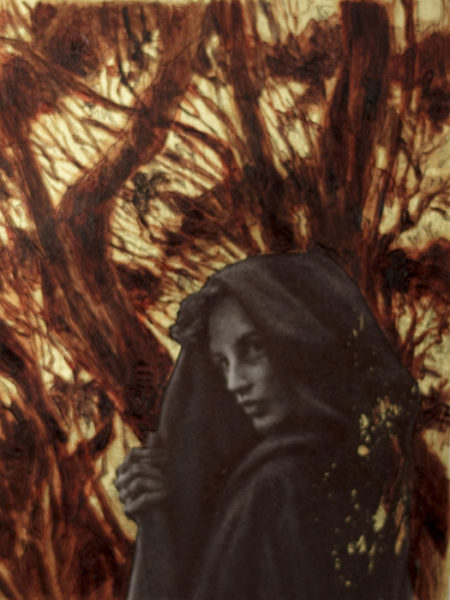
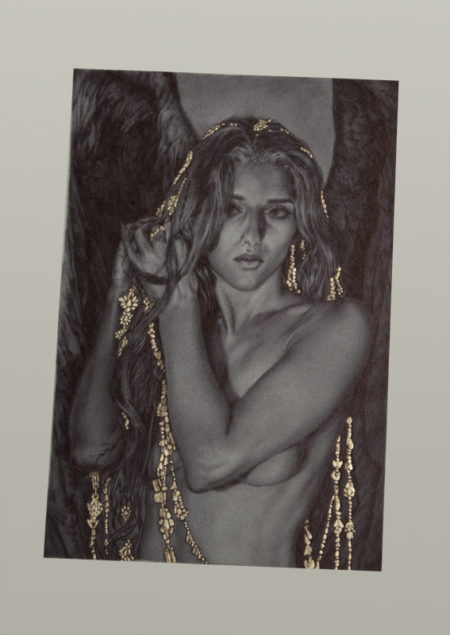
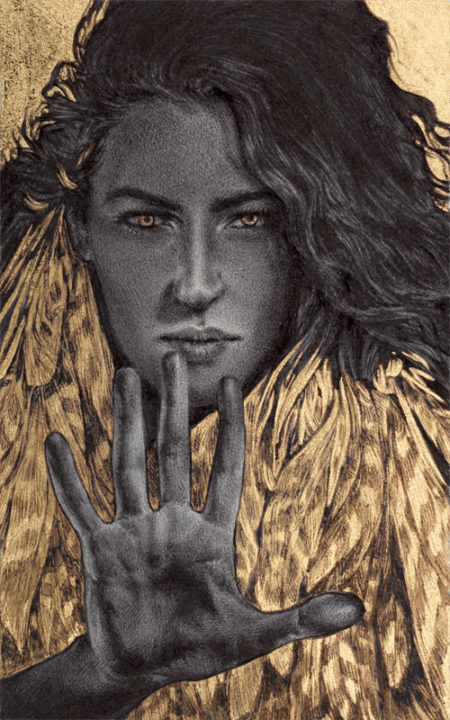
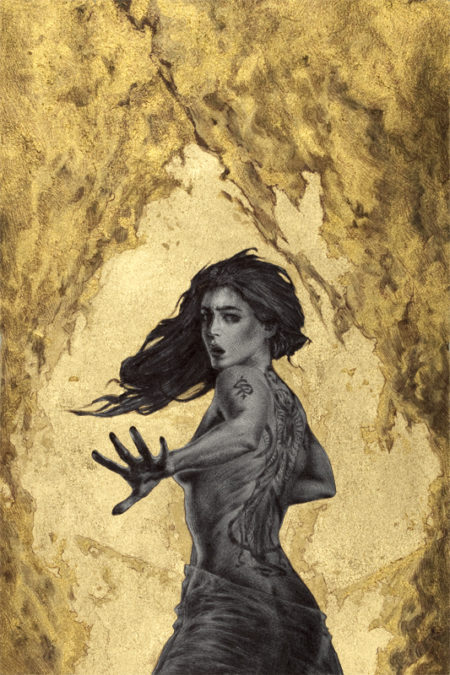
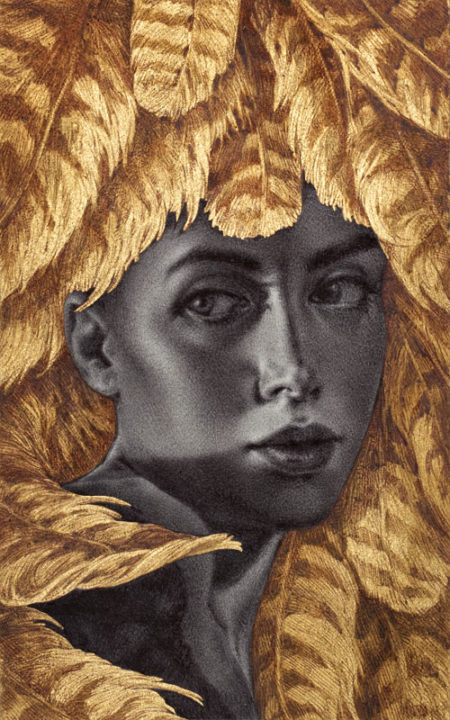

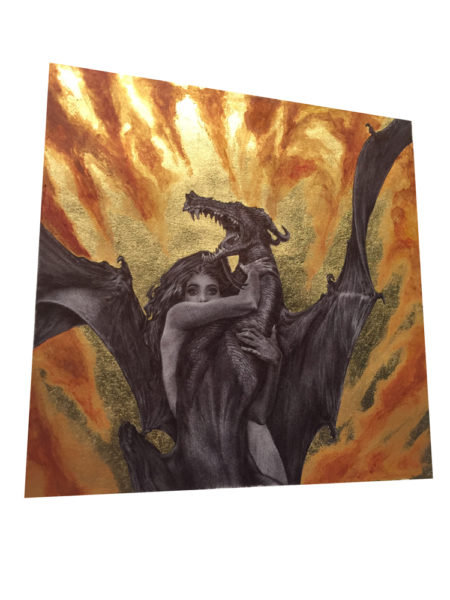

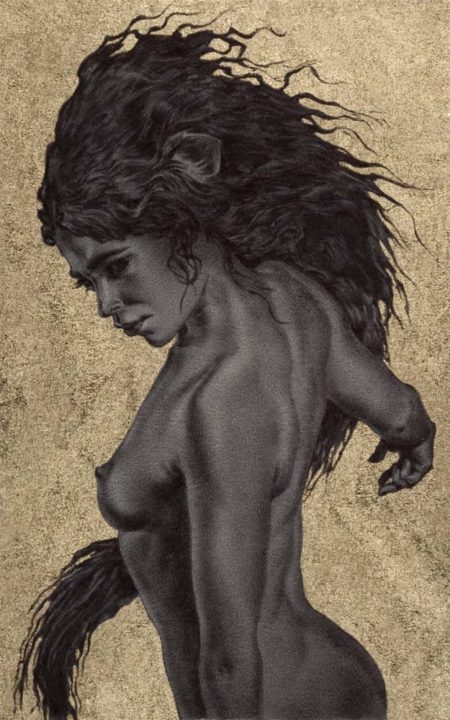



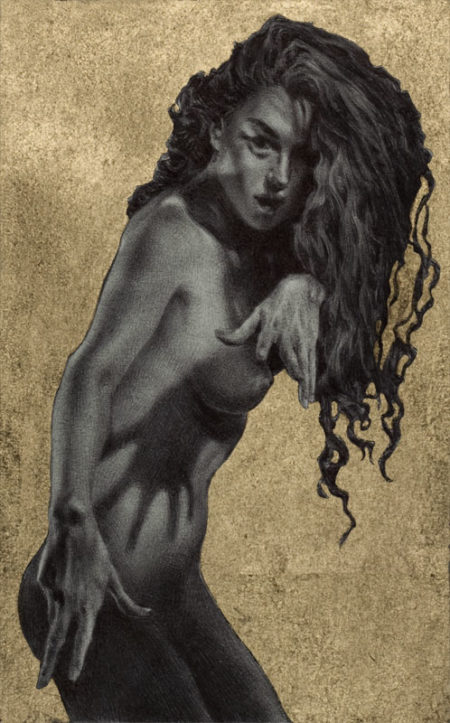
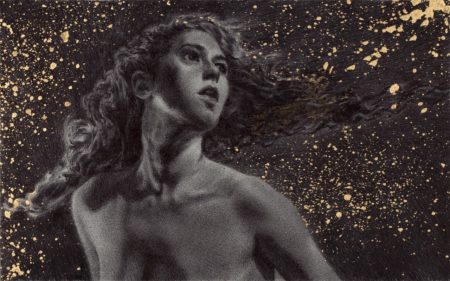
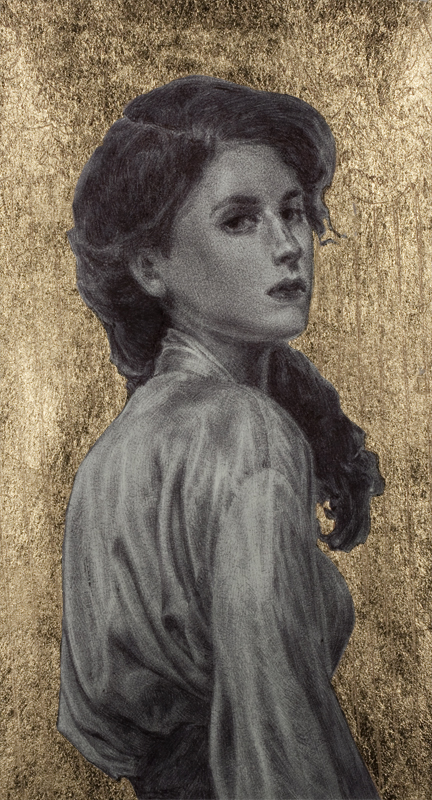
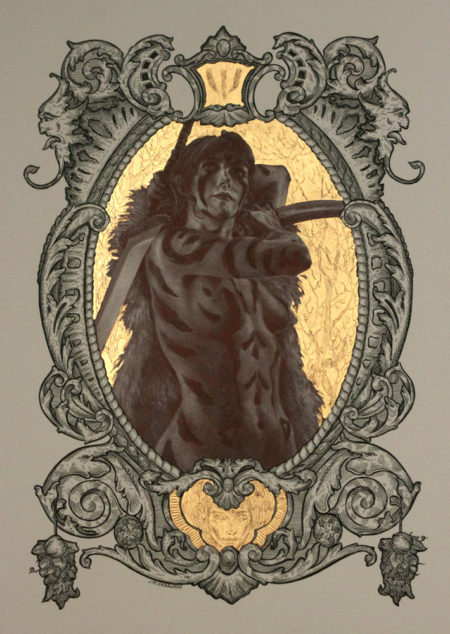
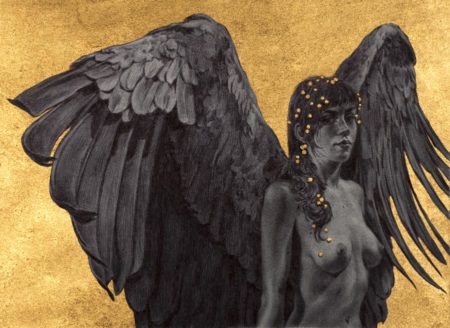

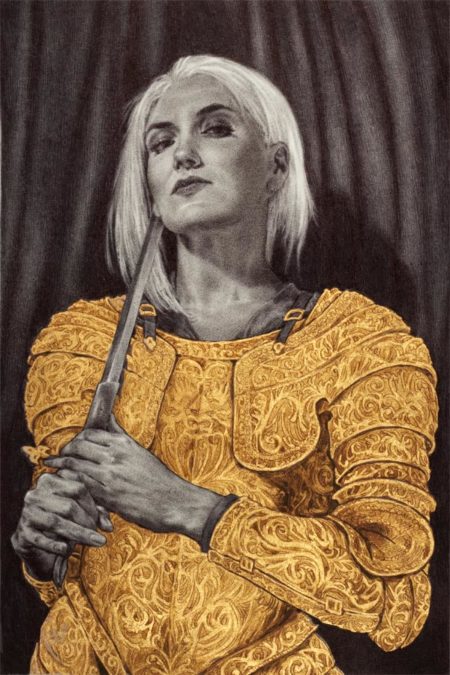
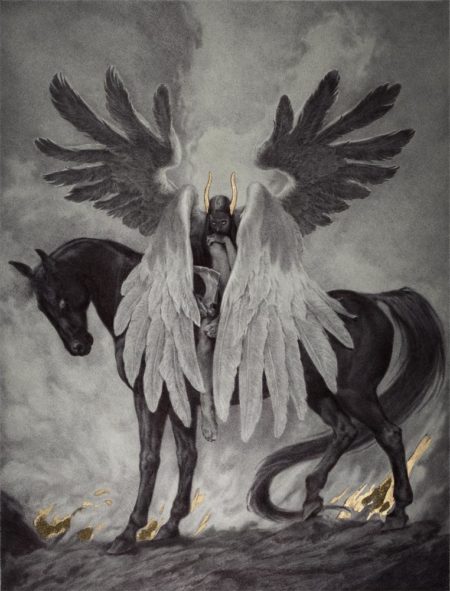
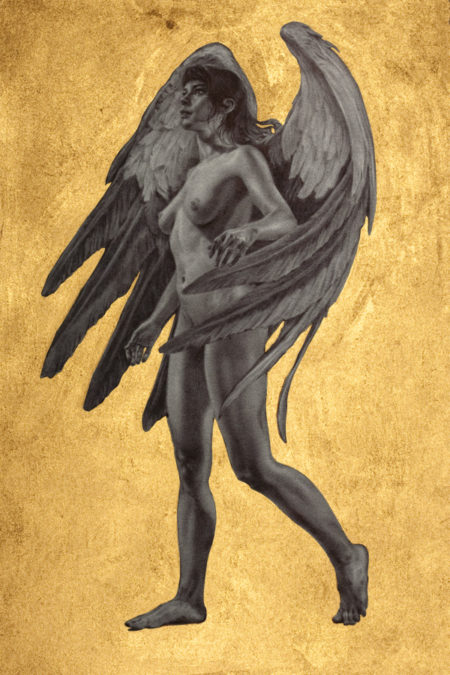
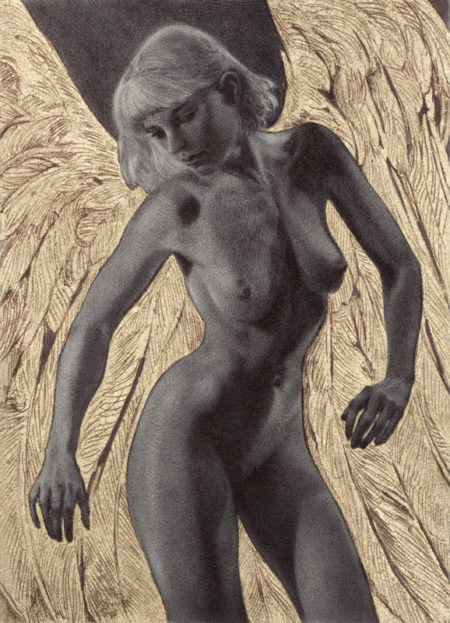
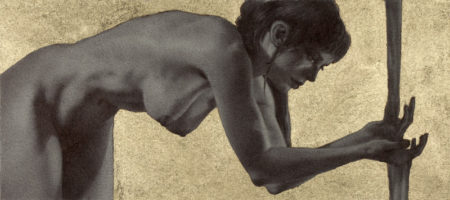


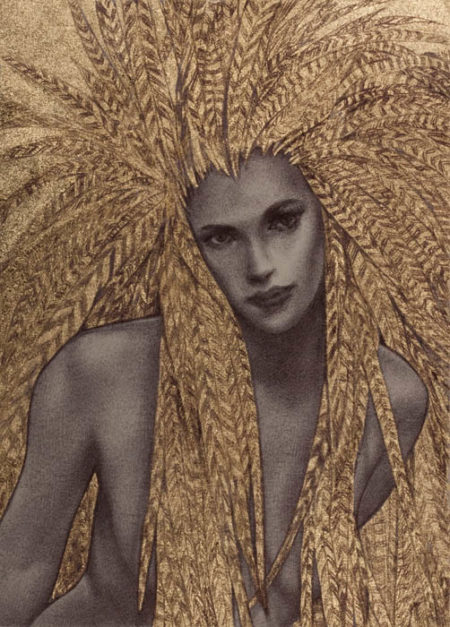
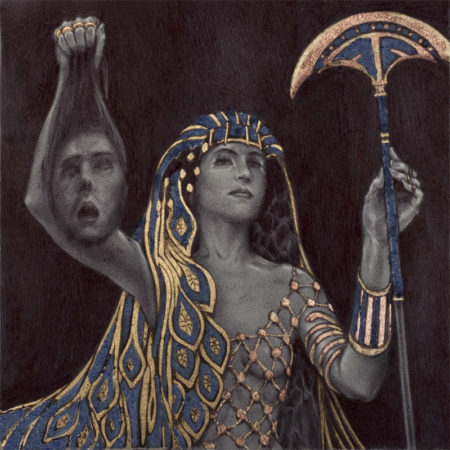
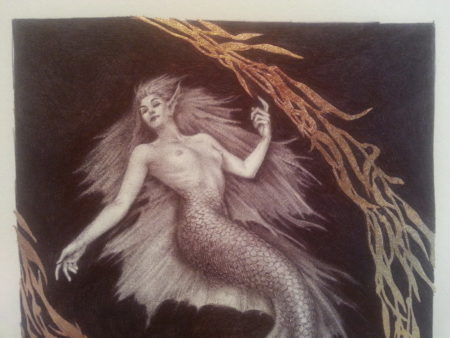
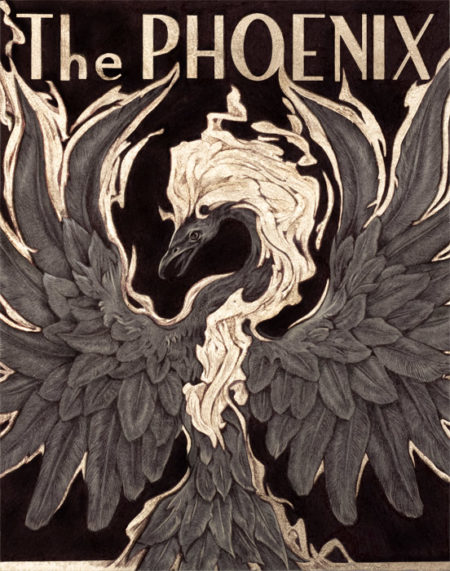
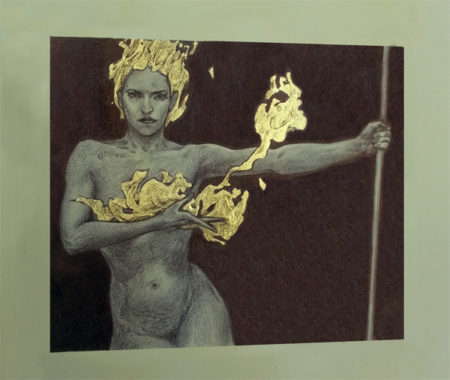
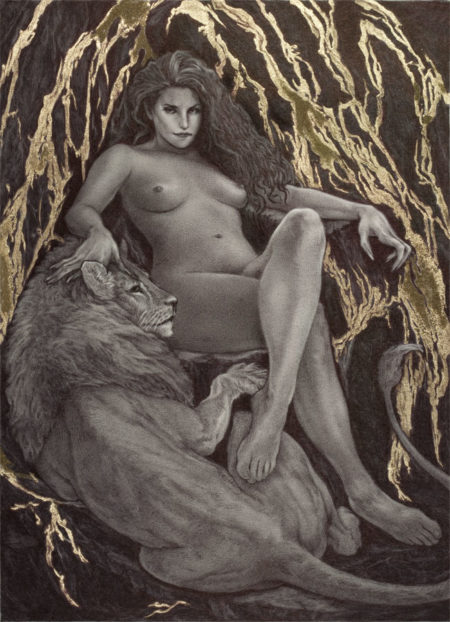
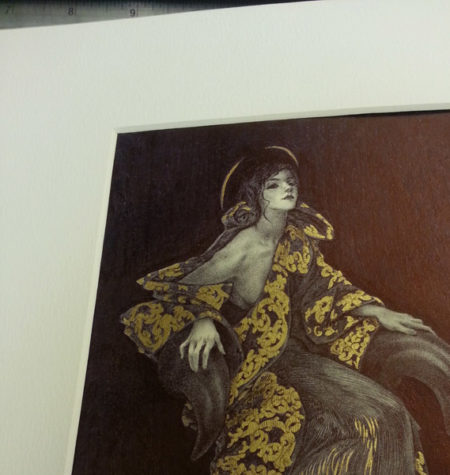

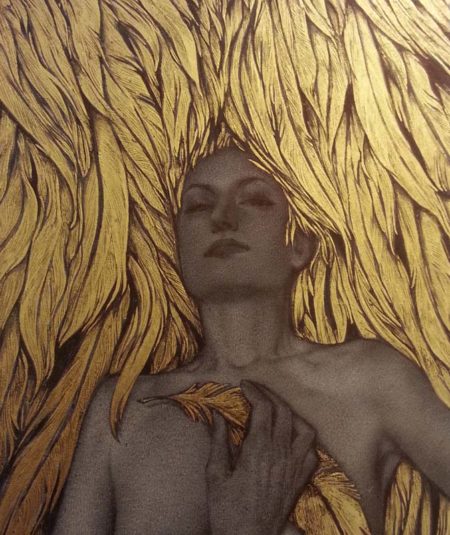
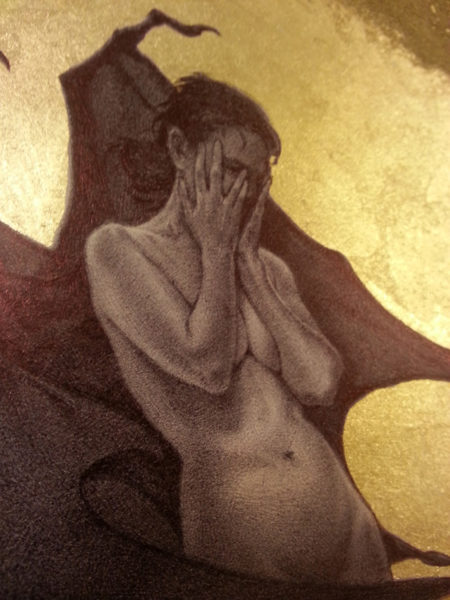
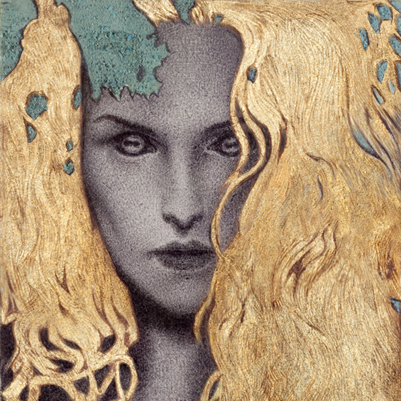

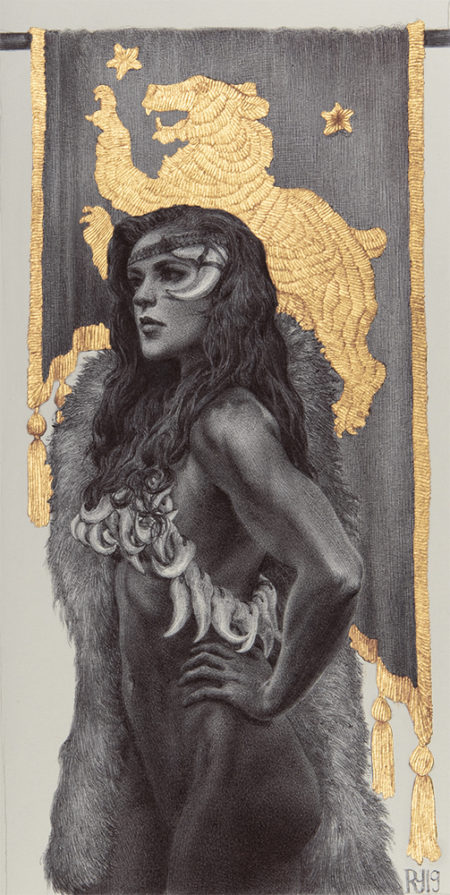

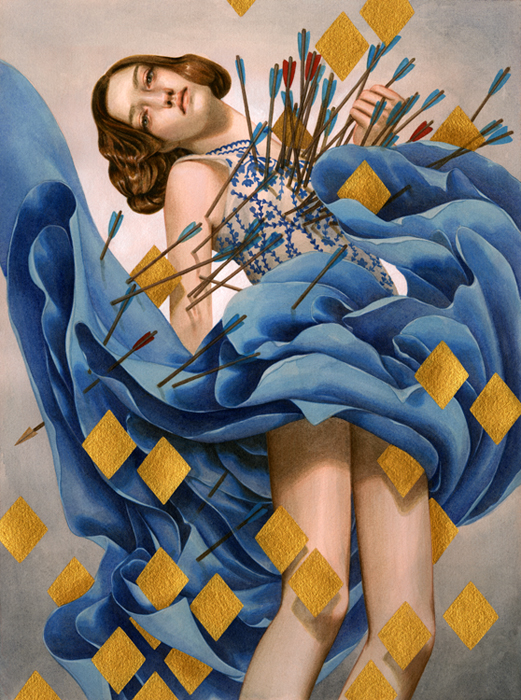 3. If I recall correctly, you were initially a very polite “no” to the invite to Every Day Original. What was your hesitation? What changed your mind?
3. If I recall correctly, you were initially a very polite “no” to the invite to Every Day Original. What was your hesitation? What changed your mind?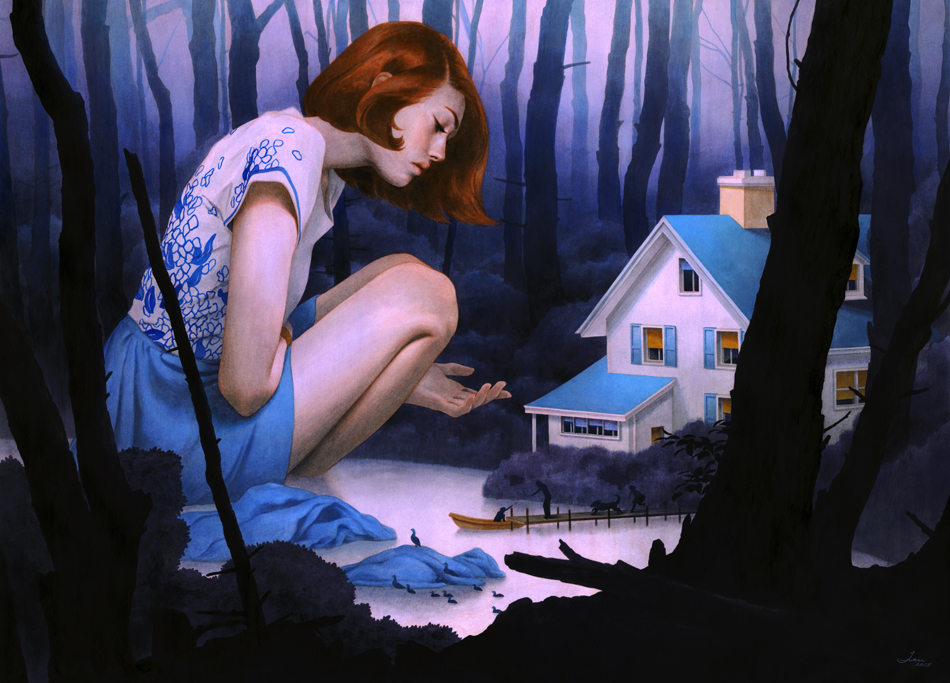
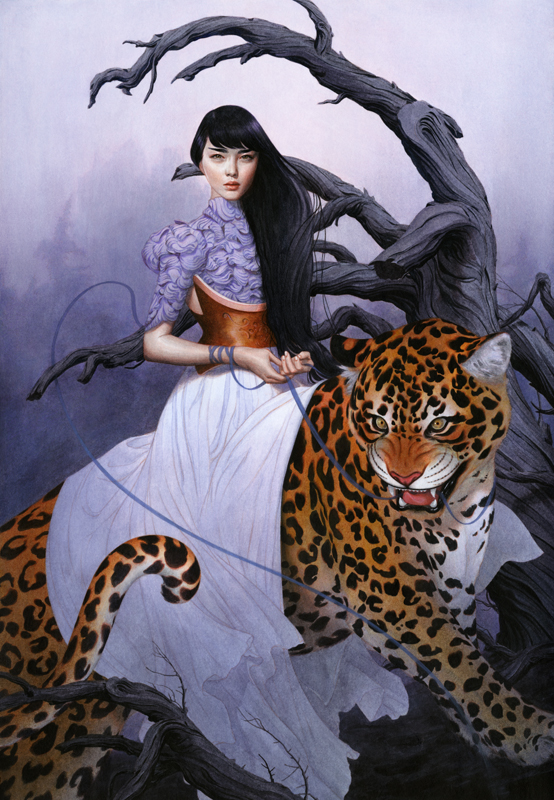 10. Is using color something that comes naturally to you, or something you struggled and worked up to?
10. Is using color something that comes naturally to you, or something you struggled and worked up to?
